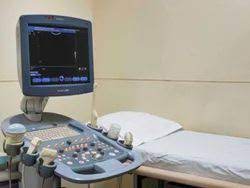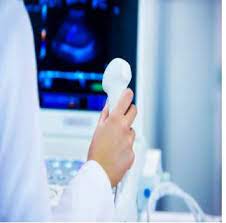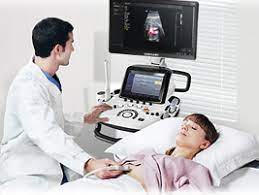Radiology services




Radiology services
Ultrasonography, also known as ultrasound imaging or diagnostic sonography, is a medical imaging technique that uses high-frequency sound waves to create real-time images of the internal structures of the body. It is a non-invasive, safe, and widely used imaging modality.
Abdominal Ultrasound: This type of ultrasound examines the organs within the abdomen, including the liver, gallbladder, pancreas, spleen, kidneys, and abdominal blood vessels. It can help diagnose conditions such as liver disease, gallstones, kidney stones, and abdominal masses.
Obstetric Ultrasound: Obstetric ultrasound is performed during pregnancy to monitor the development and health of the fetus. It can determine gestational age, assess fetal growth, detect multiple pregnancies, and identify any abnormalities or complications.
Pelvic Ultrasound: Pelvic ultrasound is used to examine the organs in the pelvis, including the uterus, ovaries, fallopian tubes, and bladder. It can help diagnose conditions such as ovarian cysts, uterine fibroids, pelvic inflammatory disease, and evaluate fertility-related issues.
Cardiac Ultrasound (Echocardiography): Echocardiography uses ultrasound to assess the structure and function of the heart. It can evaluate heart valves, chambers, and blood flow, diagnose heart conditions like coronary artery disease, heart failure, and congenital heart defects.
Vascular Ultrasound: Vascular ultrasound examines the blood vessels to evaluate blood flow and detect any abnormalities or blockages. It can assess the arteries and veins in various parts of the body, including the neck (carotid arteries), legs (peripheral arteries), and abdomen (abdominal aorta).
Musculoskeletal Ultrasound: Musculoskeletal ultrasound is used to evaluate muscles, tendons, ligaments, joints, and soft tissues. It can help diagnose conditions such as tendonitis, bursitis, sprains, tears, and guide procedures like joint injections or aspirations.
Breast Ultrasound: Breast ultrasound is often used as a supplemental imaging tool along with mammography to evaluate breast abnormalities. It can help characterize breast lumps, guide biopsies, and assist in the diagnosis of breast cancer.
Thyroid Ultrasound: Thyroid ultrasound is used to assess the thyroid gland for any nodules, enlargement (goiter), or abnormalities. It can help diagnose thyroid conditions like thyroid nodules, thyroiditis, or thyroid cancer.
Renal Ultrasound: Renal ultrasound examines the kidneys to assess their size, shape, and structure. It can help identify kidney stones, cysts, tumors, or obstructions and evaluate kidney function.
Transvaginal Ultrasound: Transvaginal ultrasound is performed by inserting a small probe into the vagina to obtain detailed images of the reproductive organs in women. It can help evaluate the uterus, ovaries, and fallopian tubes and is commonly used in infertility investigations or pelvic pain assessments.
These are some of the common ultrasonography services available. The specific types of ultrasounds offered may vary depending on the healthcare facility and the expertise of the medical professionals. It’s important to consult with a qualified healthcare provider for appropriate diagnostic imaging and interpretation.
